Nikon
200mm
Center Sharpness Comparison
© 2008 KenRockwell.com. All rights reserved.
200mm Center Comparison (this page)
June 2008 More Nikon Reviews
Introduction
Let's take thirty different fixed and zoom lenses and see which is the sharpest at 200mm. Easy! Just kidding: it took a long time to shoot them all in a way that I could figure out which files went with which lens and then another long time to format them all into this page to make the results visible. It all has to be shot fast enough that the light can't change from the first lens to the last.
Many thanks to all of you who helped me assemble all these lenses at one place at one time so these can be compared fairly.
This is all shot on a Nikon D300, which has the same pixel pitch as the D3X. These results should apply just as well to the center of the D3X. Unfortunately I couldn't get hold of a real D3X, whose audio note recording function would greatly have simplified the note-taking required to correlate which lens to which files.
This is just like a traditional Greek wrestling match. Every competitor is butt naked and competing on the same ground. There are no handicaps to help the weak. Some of these lenses are just a few months old, while others are 40-year-old veterans.
Warning One
Almost all of these lenses are very sharp. I'm doing stupid things to exaggerate the differences.
See Lens Sharpness for why none of this really matters.
Warning Two
I'm only showing a tiny central section of an image.
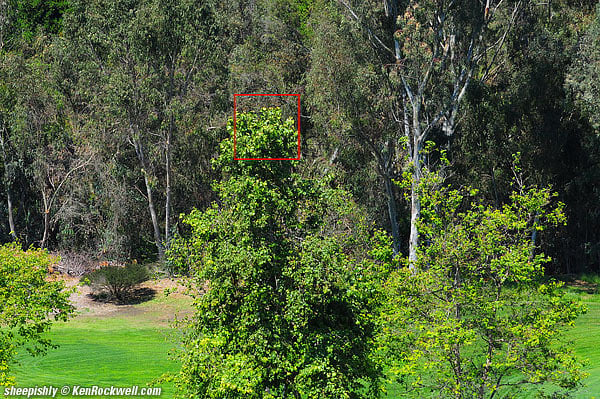
Full DX image. Red box shows crop area.
On a D3X, the crop will remain the same but the full image would be larger and cover more.
These images are all crops from 100% images shot at ISO 200 on my D300. The full images would be 43" (110cm) wide at this magnification. I never print this large; do you? On the D3X, the full images would print 60" (1.5 meters) wide!
These are so highly magnified and made under such special conditions that I'm showing differences too minute to be significant for almost any sort of photography.
Warning Three
This stupid tree is 600 feet (200 meters) away, and even in the suckiest enlarged images below you still can see every leaf!
Warning Four
I only have three hands. Not all the exposures match, so please don't confuse a lighter or darker image with one that's less sharp.
Guide to the Lenses Compared top
I've tried to put similar lenses close to each other.
I've grouped the modern AF zooms at the top, followed by fixed 180mm and 200mm AF and manual focus lenses, then the manual-focus zooms. I put the Vivitar, Tokina and Canon lenses at the bottom, just for organization's sake.
Nikon 70-300mm VR (2007) |
Nikon 55-200mm DX VR (2007) |
Nikon 80-200mm f/2.8 AF-S (1999) |
Nikon 70-180mm AF-D Micro (2000) |
Nikon 70-200mm f/2.8 VR (2004) |
|
Nikon 80-400mm VR (2001) |
Nikon 70-210mm f/4 Series E (1985) |
Nikon 70-210mm f/4-5.6 AF (1989) |
Nikon 70-210mm f/4 AF (1987) |
| Nikon 180mm f/2.8 AI (1977) |
Nikon 180mm f/2.8 ED AI-s (1986) |
Nikon 180mm f/2.8 ED AF (1987) |
Nikon 180mm f/2.8 ED AF-D (1995) |
Nikon 200mm f/4 F Nikkor-Q (1971) |
Nikon 200mm f/4 AI (1980) |
80-200mm f/4.5 F Nikkor•C (1974) |
|
Nikon 80-200mm f/4 AI-s (1985) |
|
Nikon 80-200mm f/2.8 AI-s (1983) |
Nikon 50-300mm f/4.5 F (1968) |
Nikon 50-300mm f/4.5 AI (1977) |
Nikon 50-300mm f/4.5 ED AI-s (1987) |
Nikon 100-300mm f/5.6 AI-s (1992) |
|
Canon 70-200mm f/4 L IS (2007) on 5D |
Tokina AT-X 80-200mm f/2.8 AI-s |
Links take you to my reviews of each. If there's no link, then I'm working on a review. Years are the dates of each sample of lens.
Lenses marked F, AI, AI-S or Series E are manual focus. Some of these lenses, like the Nikon 80-200mm f/2.8 AI-s and 50-300mm lenses, are very rare and you're not likely to come across them.
The old F lenses were AI updated to work on the D300 and D3X.
The 100-300mm lens was shot a different day at the same time.
Except for the 55-200mm DX VR, all these lenses work on FX (full-frame and film) as well as DX cameras.
For the sake of my sanity and eyesight, I limited myself to dedicated tele zooms and fixed lenses. I didn't attempt to include full-range zooms like the 18-200mm VR, 28-200mm AF-D, 28-200mm AF-G and 35-200mm AI-s. You try rounding up thirty lenses in one place and see if you have brainpower left to add any more.
Technik
The use of a natural target is intentional. Leaves have a fractal nature which means they have sharpness at all spatial frequencies at all magnifications in all axes. This makes sharpness obvious at every level and magnification and in any diection, and makes any smearing obvious.
Artificial objects, like buildings and classified ads, have sharp lines. Lines have detail only at some spatial frequencies (usually at odd-ordered harmonics) and only in some directions. Sure we can see differences in sharpness with these targets, but we can't see as much at the same time.
I put the camera on a tripod. Exposures were 1/500 at f/8, and 1/4,000 and faster at f/2.8 and larger.
At Maximum Aperture top
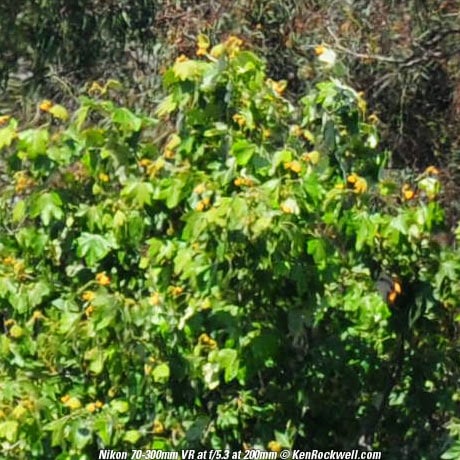 |
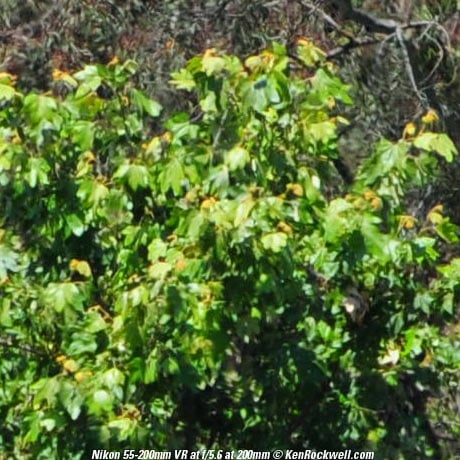 |
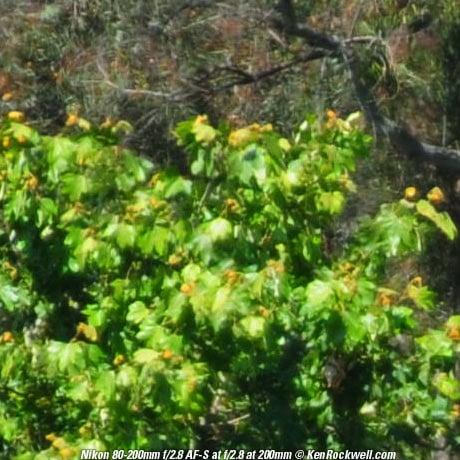 |
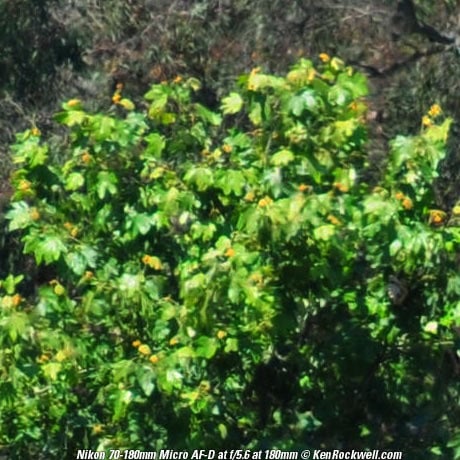 |
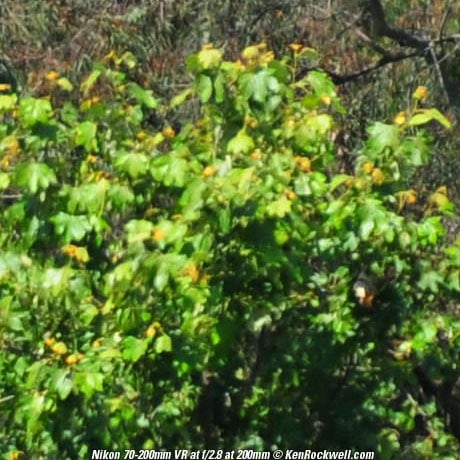 |
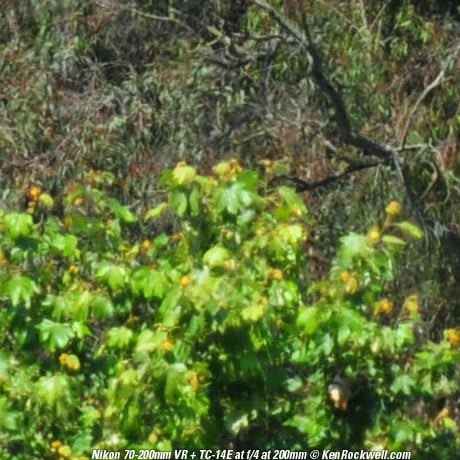 |
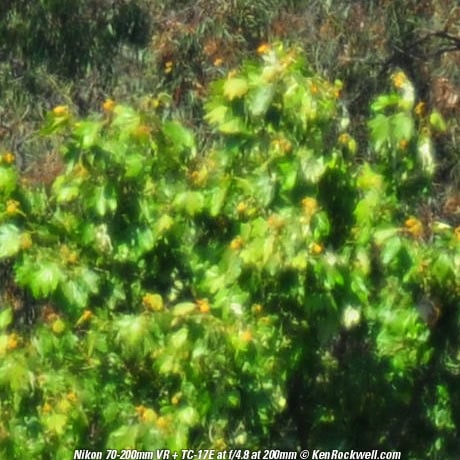 |
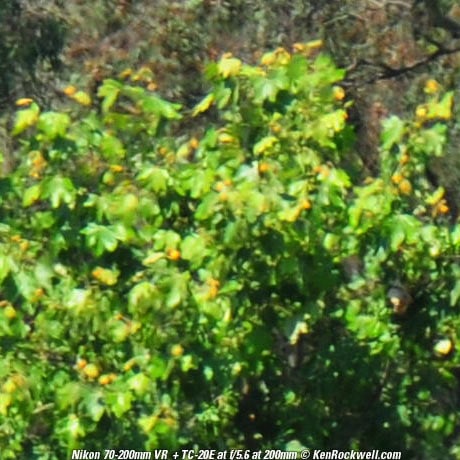 |
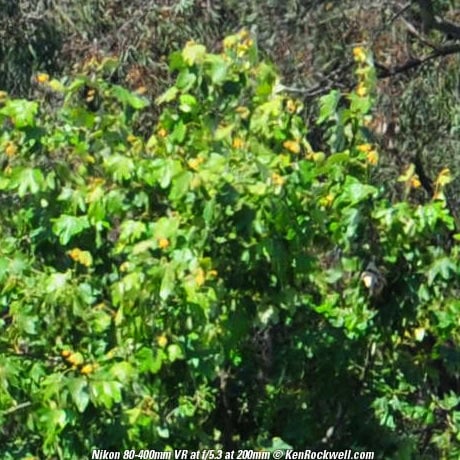 |
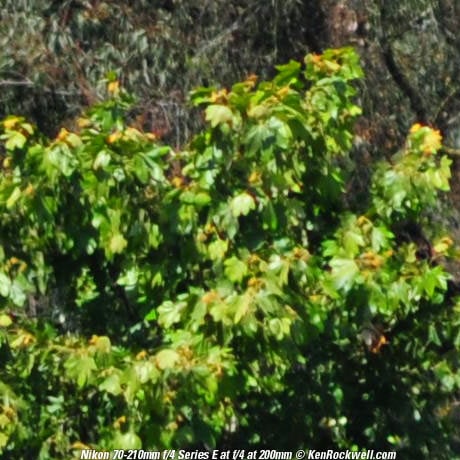 |
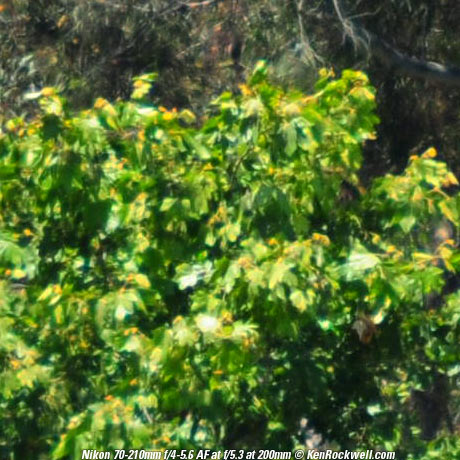 |
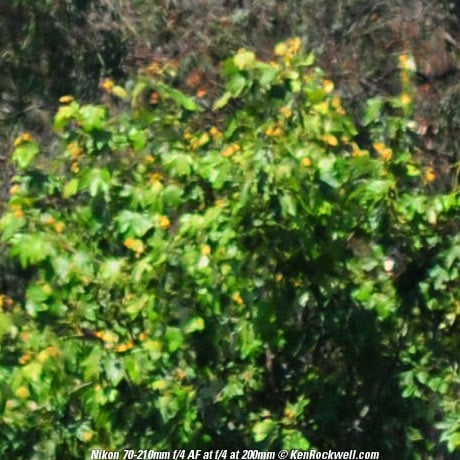 |
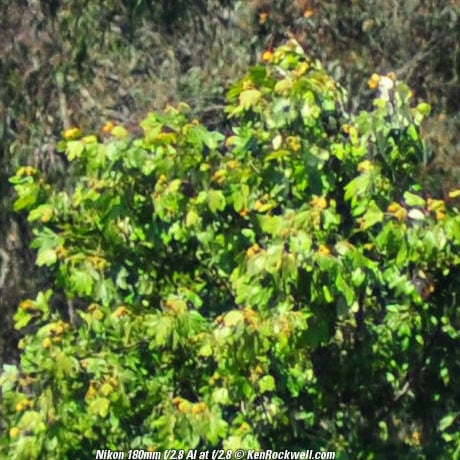 |
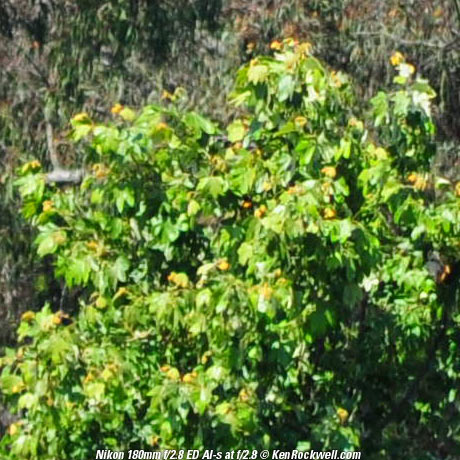 |
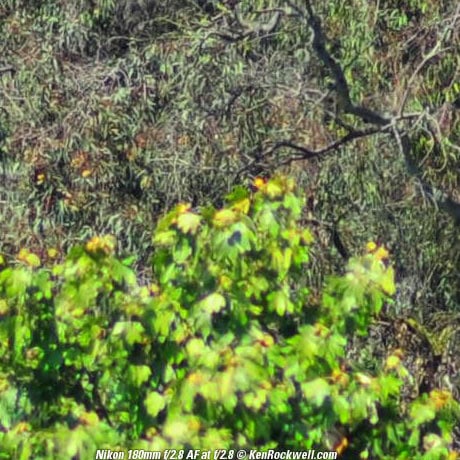 |
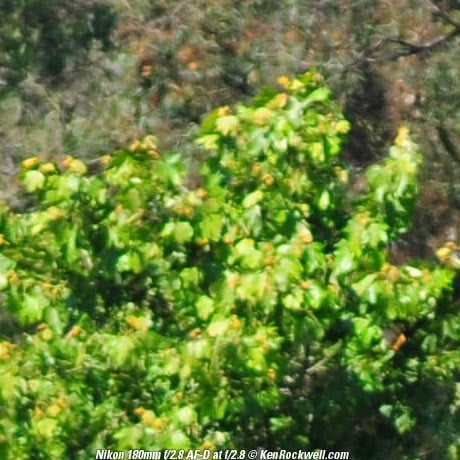 |
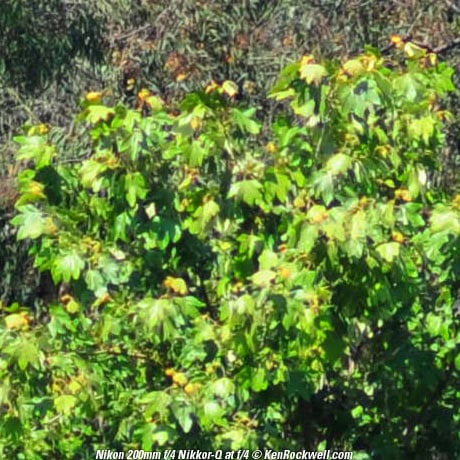 |
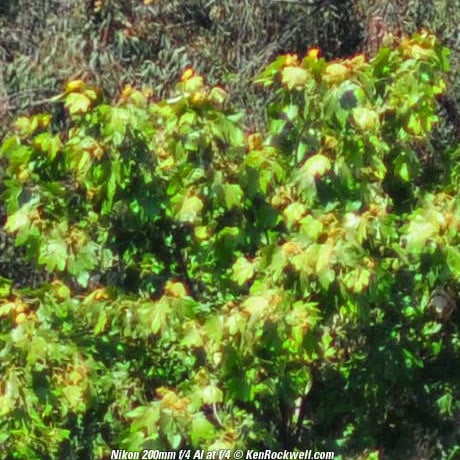 |
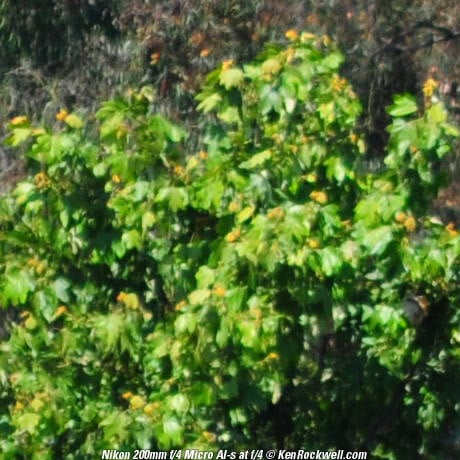 |
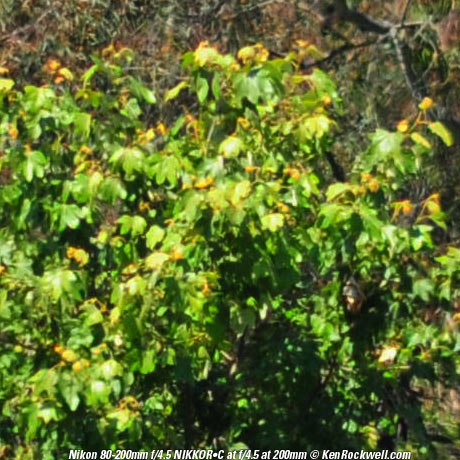 |
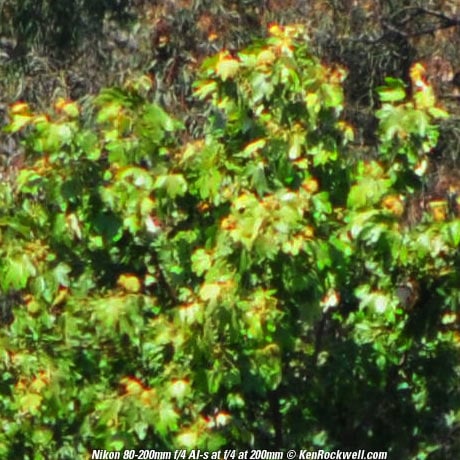 |
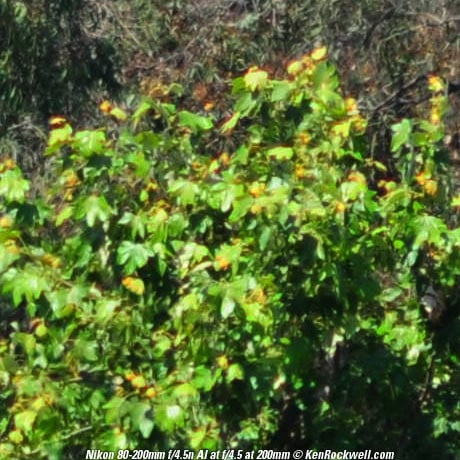 |
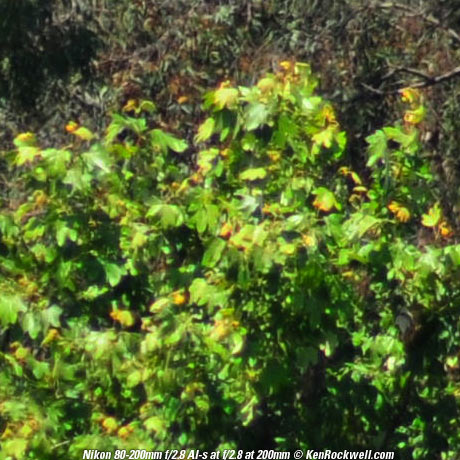 |
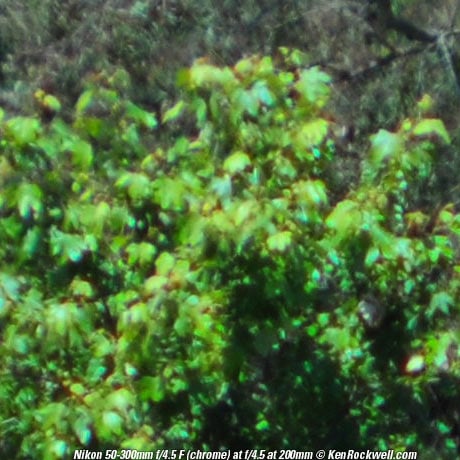 |
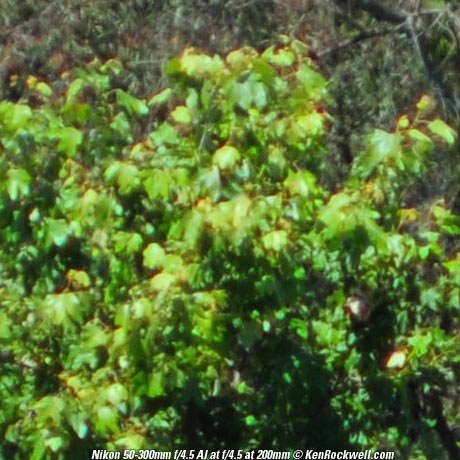 |
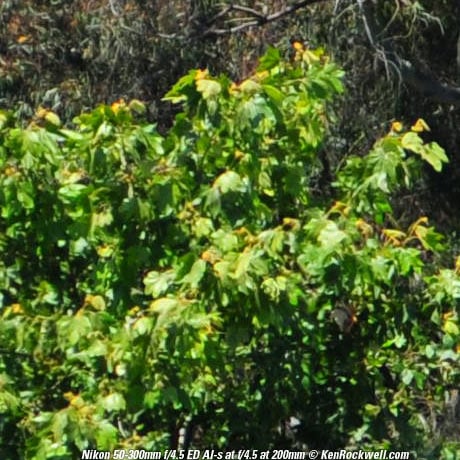 |
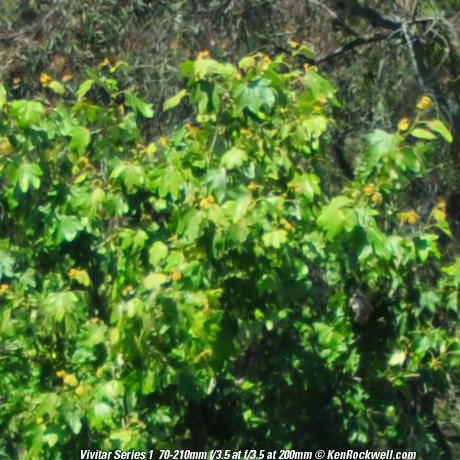 |
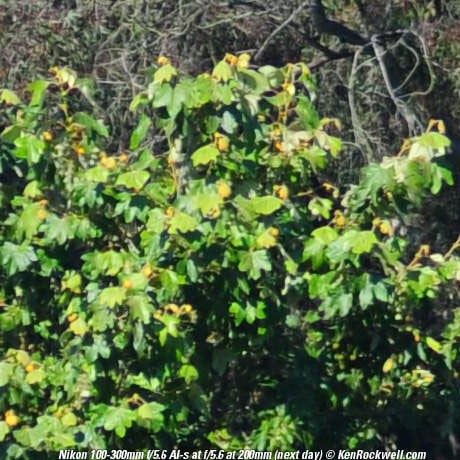 |
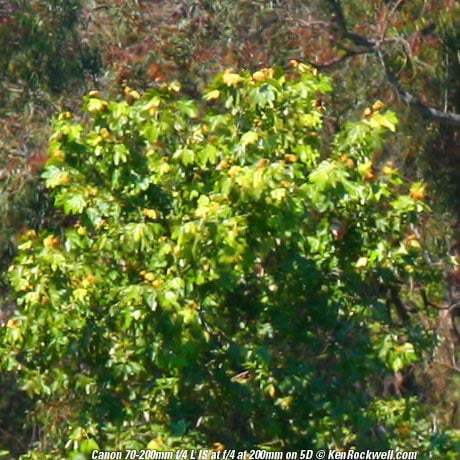 |
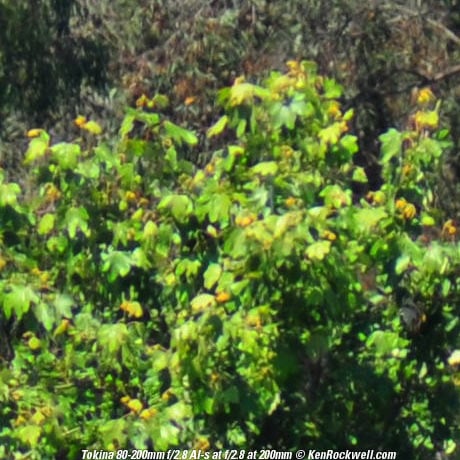 |
At f/8 top
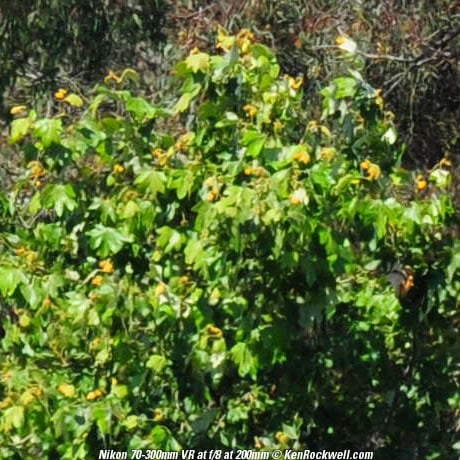 |
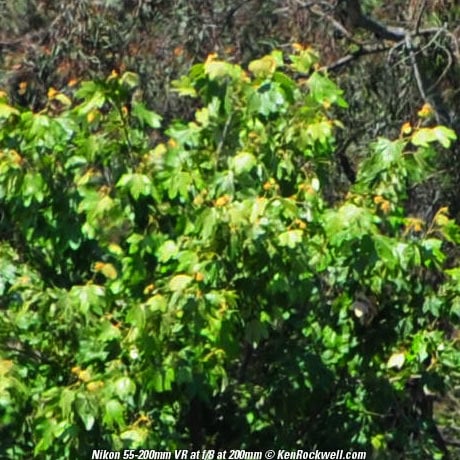 |
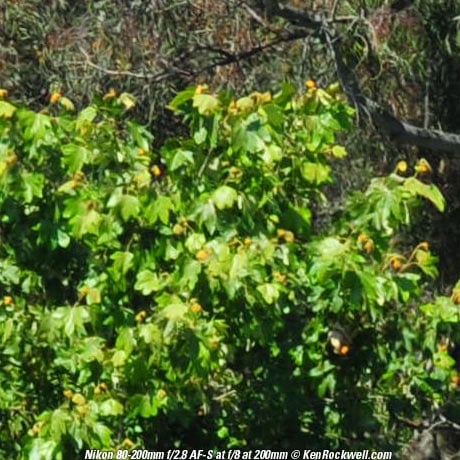 |
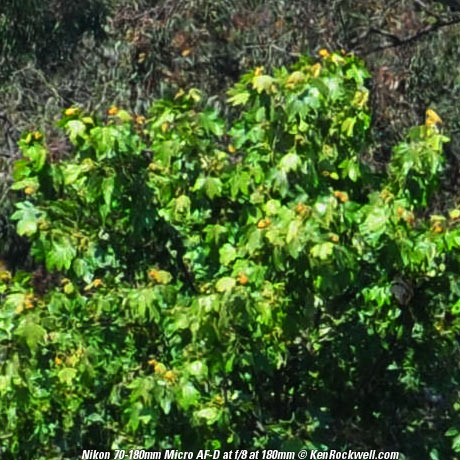 |
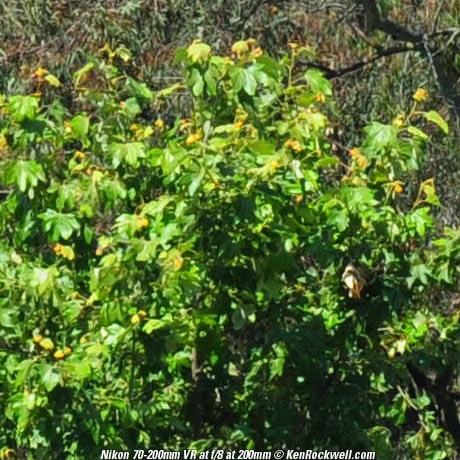 |
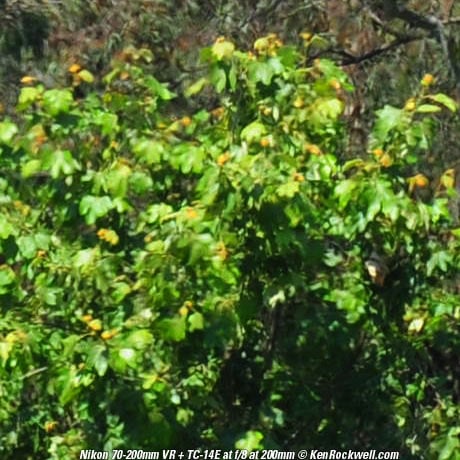 |
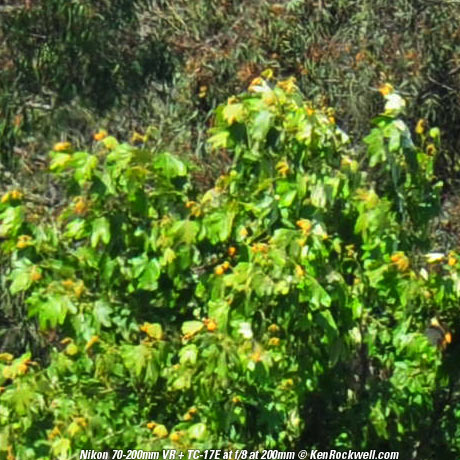 |
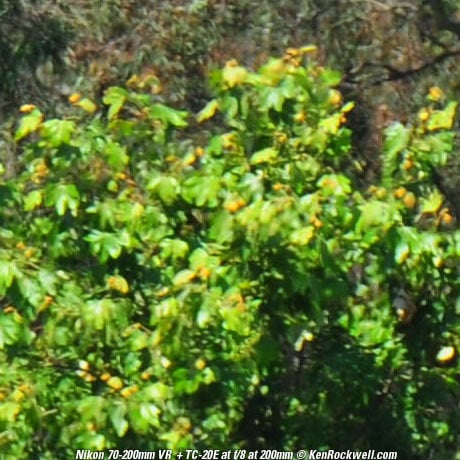 |
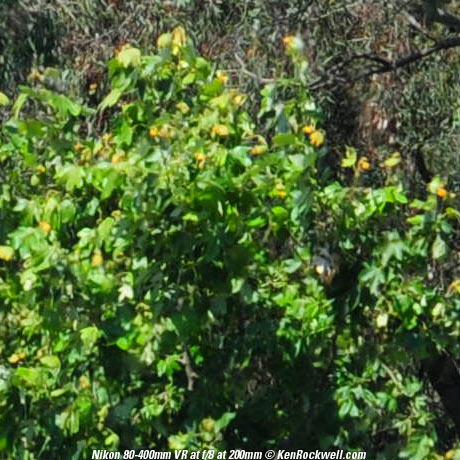 |
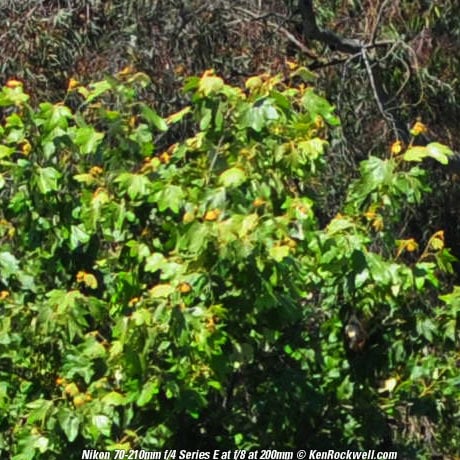 |
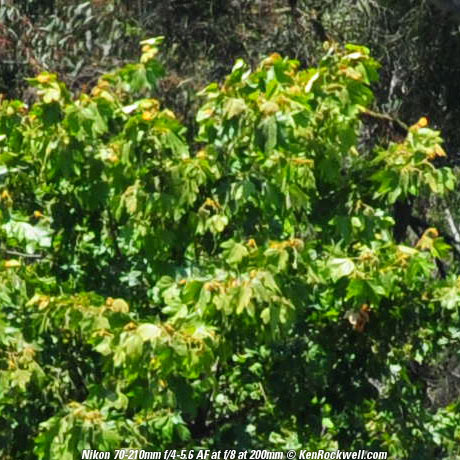 |
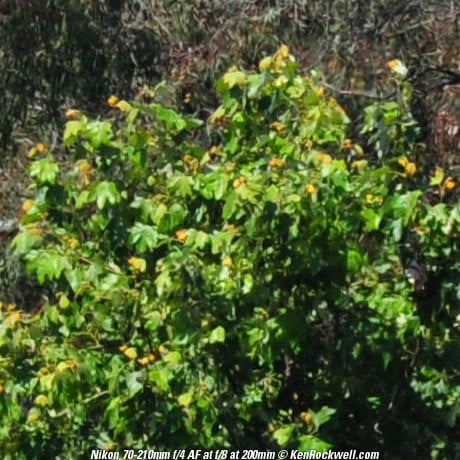 |
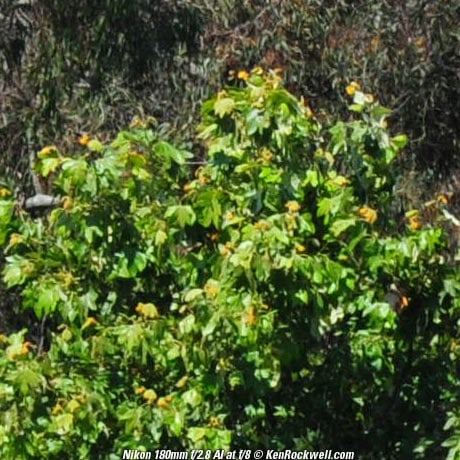 |
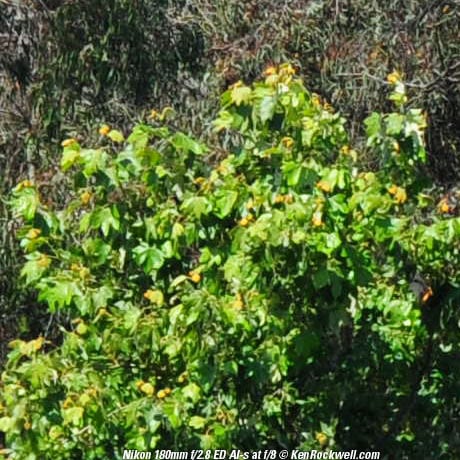 |
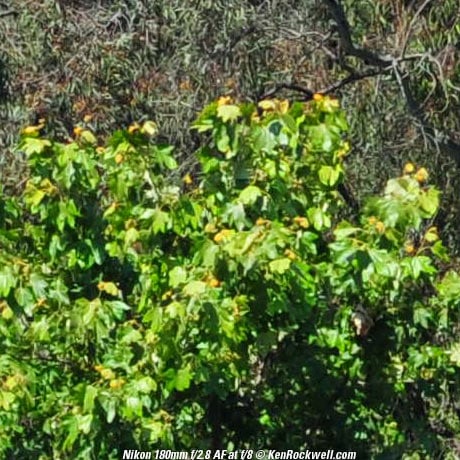 |
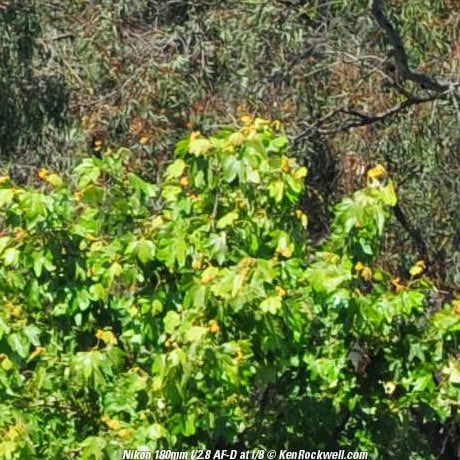 |
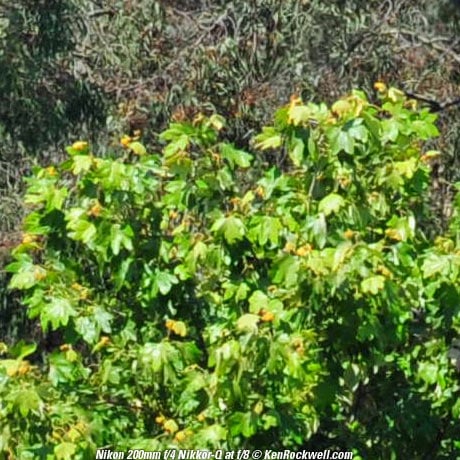 |
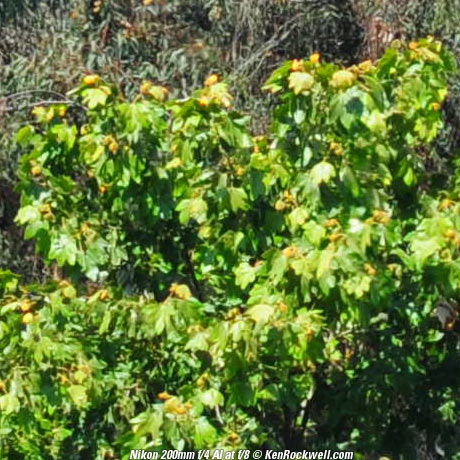 |
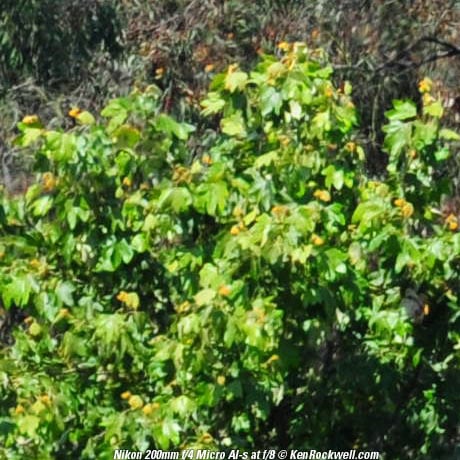 |
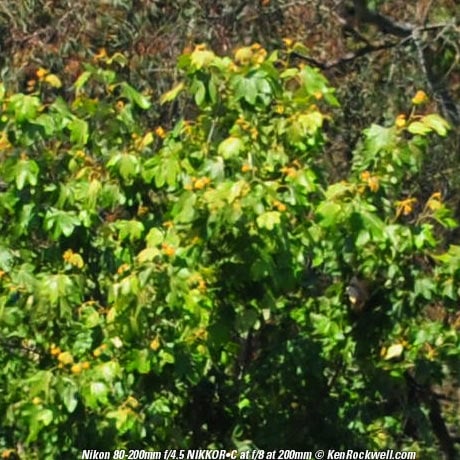 |
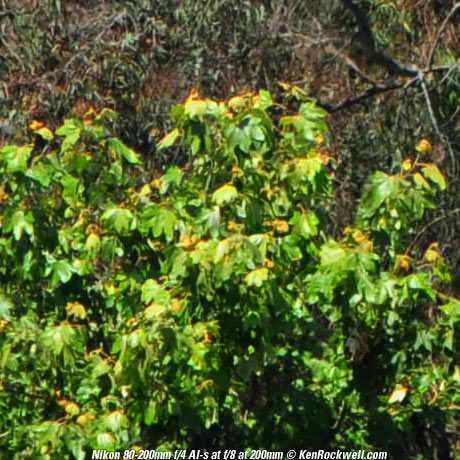 |
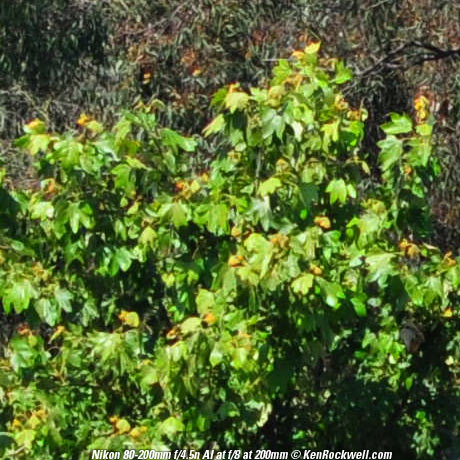 |
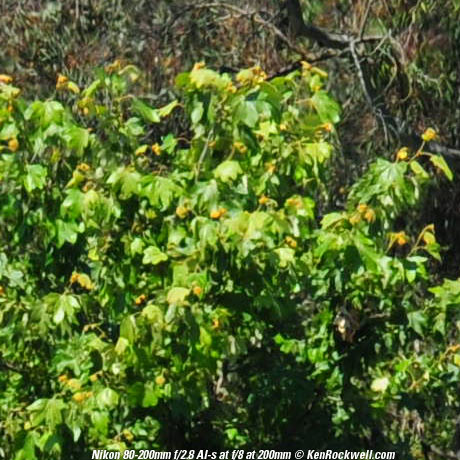 |
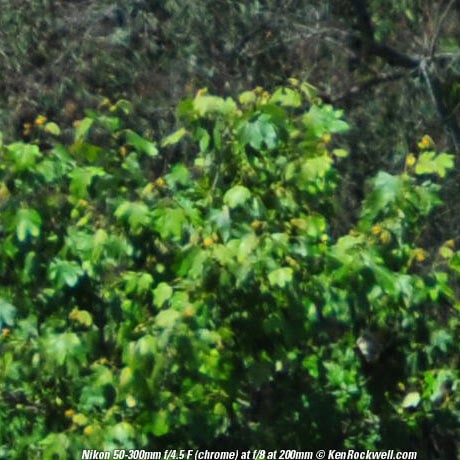 |
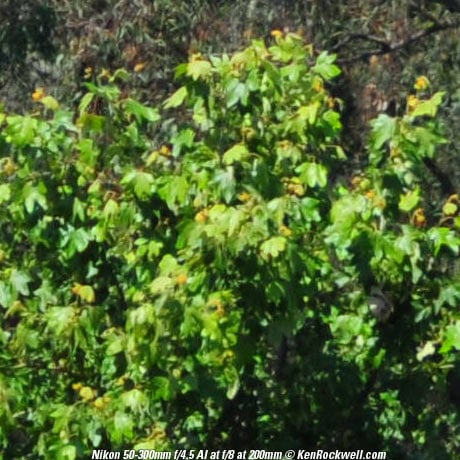 |
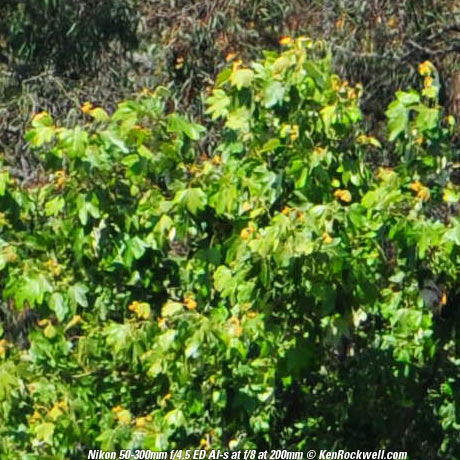 |
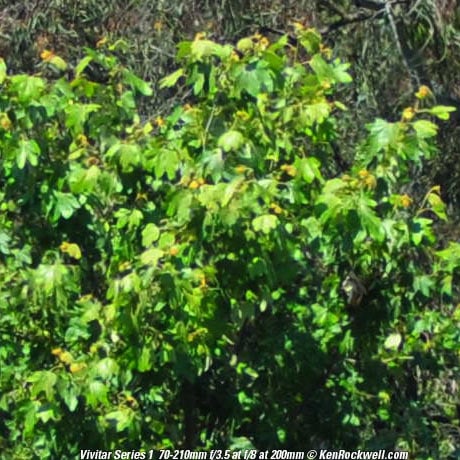 |
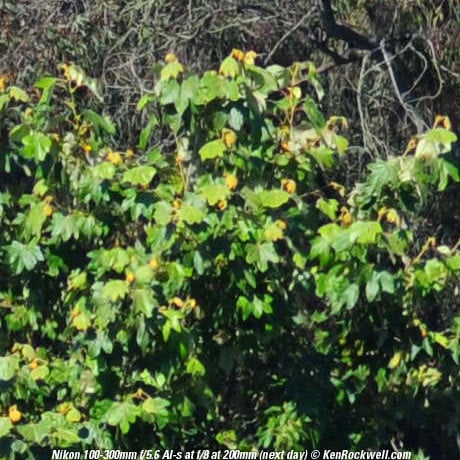 |
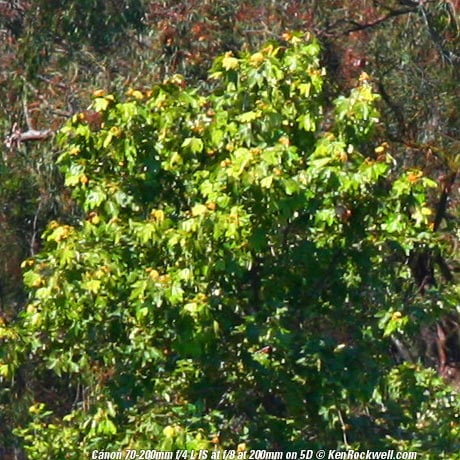 |
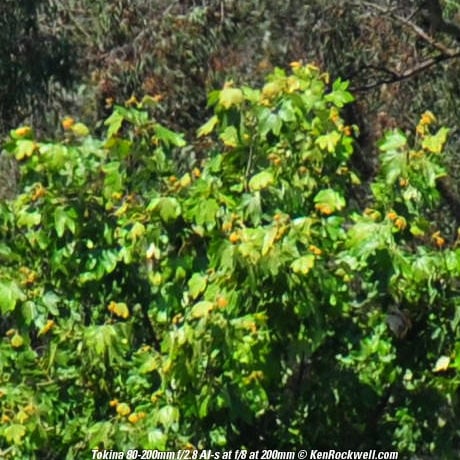 |
Summary top
Have you gone blind yet? What this shows me is that most lenses look alike. Some types are obviously worse and some are much better wide-open, but 90% of them look identical to each other shot at a normal apertures.
None of this really matters for serious photography. All of these can be used to create incredibly great photos.
This also shows the futility of attempting to express technical image quality in precise numerical terms. Before your eyes gave out, I'm sure you noticed that even though many of the lenses look different in various ways, they were all about as good.
Today's current Nikon 180mm f/2.8 ED AF-D looks terrible at f/2.8, which I suspect is a simple autofocus issue which I will investigate when I get to a more detailed review of it. Likewise, the Nikon 180mm f/2.8 ED AF autofocused behind the tree. All three versions of the 180mm f/2.8 AF have exactly the same optics and mechanics, differing only in exterior finish, and all three are superb performers in actual photography. That's why I suspect the AF-D version just had a bad shot. I had to run through all these lenses very quickly to be able to shoot thirty of them before the light changed, so I didn't stop to give any preferential handicap treatment. Like I said at the top, this comparison is a man's wrestling match and not a sugar-coated sport for the weak.
I'll let you make your own choice of which lenses you prefer.
As my eyes see it: top
Better lenses (in no particular order)
180mm f/2.8 ED AI-s (probably the best here)
200mm f/4 F Nikkor-Q (an ancient lens that rarely sells for over $35 used)
80-200mm f/4.5n AI
100-300mm f/5.6 AI-s
50-300mm f/4.5 ED AI-s
Crappier lenses
50-300mm f/4.5 F and AI
Analysis top
The 180mm f/2.8 ED AI-s looks best to me wide open. This isn't news; the 180mm f/2.8 ED AI-s has a decades-long reputation as Nikon's sharpest lens ever.
The fact that the 70-300mm VR, 55-200mm DX VR, 80-400mm VR show well is good news, because they are popular. The 55-200mm DX VR sells for only $250 and it's sharper than some much more expensive and faster zooms. This shows why I keep telling people to take Nikon's inexpensive lenses seriously. The more expensive lenses have more features and toughness, but no more sharpness.
It's encouraging to see the ancient 200mm f/4 F Nikkor-Q look so good. People give these away; my first one cost me only $10 used back in 1991.
The 80-200mm f/4.5n AI is the newest of the old 80-200mm f/4.5 lenses. I've confirmed folklore: this is Nikon's sharpest tele zoom. They sell used for around $100 today. The 100-300mm f/5.6 AI-s is also inexpensive used, about $150.
The 50-300mm f/4.5 ED AI-s is an insanely expensive lens. It sold new for over $3,000 in the 1980s and 1990s, and still runs four figures used.
Color Balance top
Also visible, especially with the full images from which I cropped, are that some of the oldest single-coated lenses have slight color shifts.
The 1968 50-300mm f/4.5 has 20 elements single-coated in amber. As expected, it has a bluer color rendition. No big deal; this is trivial to fix as a White Balance adjustment, or with a warming filter for film.
Canon top
I should have shot the Canon lens on a camera with higher linear resolution. As shot on the 5D, it's not a good comparison because the on-screen magnification is less as shot.
PLUG
If you find this as helpful as a book you might have had to buy or a workshop you may have had to take, feel free to help me continue helping everyone.
This page is free to read, but copyrighted. If you've gotten your gear through one of my links or helped otherwise, you're family, so feel free to make a printout of this page and images for your own comparisons.
If you haven't helped me and if you'd like permission to make prints for comparison (only), please help me with a gift of $5.00. I have to feed six mouths in addition to my own.
Not only does this stuff take a lot of time, creating it takes far more effort than looking at it. I almost went blind!
Thanks for reading!
Ken
